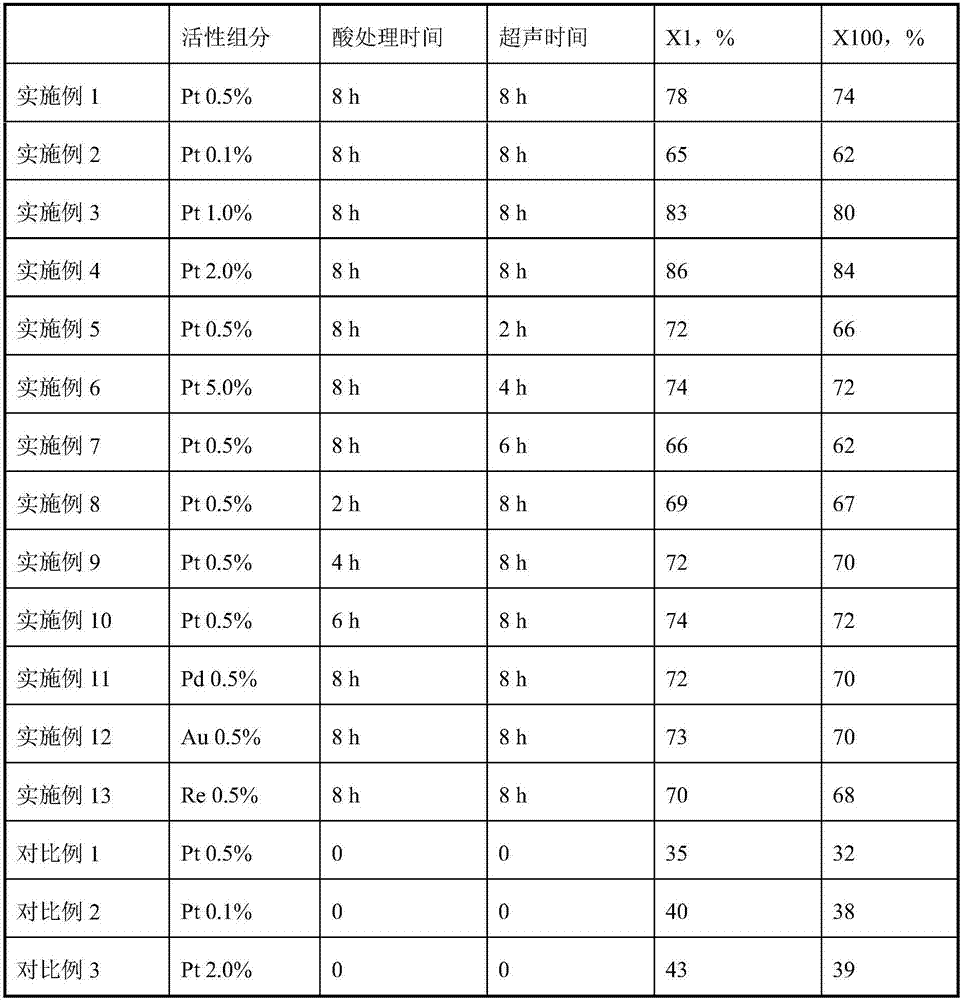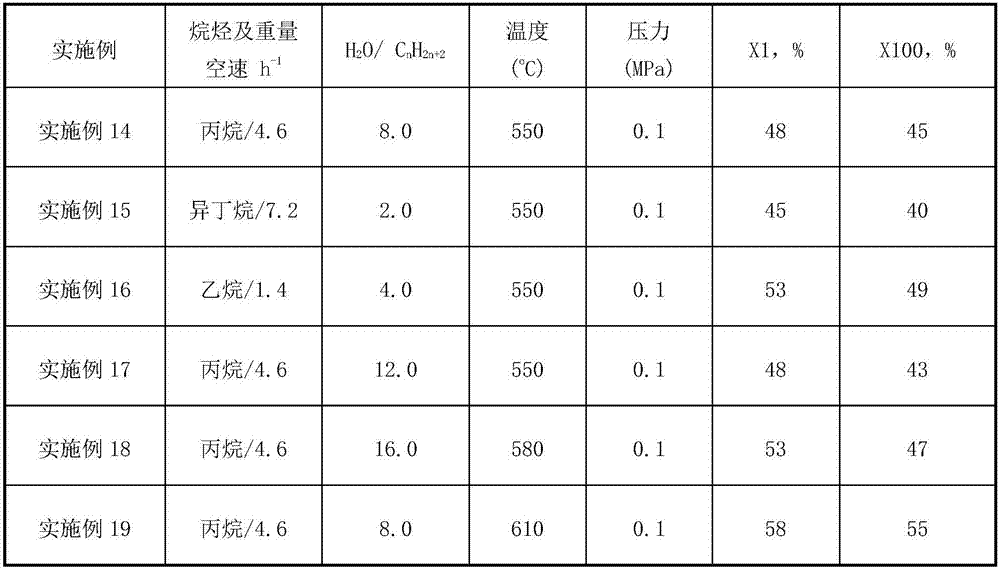Modified carbon nanometer material
A technology of carbon nanomaterials and nanomaterials, applied in the field of modified carbon nanomaterials, which can solve the problems of small loading of active components and poor dispersion
- Summary
- Abstract
- Description
- Claims
- Application Information
AI Technical Summary
Problems solved by technology
Method used
Image
Examples
Embodiment 1
[0031] Weigh 2g of single-walled carbon nanotubes (SCNT), add it to 50ml of 68% nitric acid solution, heat at 80°C for 8h, then filter, wash with water until the solution becomes neutral, and dry the obtained SCNT at 120°C for 6h to obtain Processed SCNT.
[0032] Take 0.622mL of chloroplatinic acid solution with a concentration of 16.14mL / L, add 1.378mL of water to prepare a solution, add 2g of treated SCNT to this solution, stir, place at room temperature for 2h, ultrasonicate for 8h, and then dry at 120°C for 4h , and finally put it into a muffle furnace in a He atmosphere and calcined at 350° C. for 4 h to obtain a catalyst.
[0033] The obtained catalytic material is pressed and ground, and the selected particle size is 20-40 mesh, and 0.1 g is evaluated in an isothermal fixed-bed differential reactor. Before the evaluation, it is reduced with hydrogen. The reduction conditions are as follows: normal pressure, temperature 350 ℃, the hydrogen flow rate is 20mL / min, the re...
Embodiment 2
[0036] Weigh 2g of single-walled carbon nanotubes (SCNT), add it to 50ml of 68% nitric acid solution, heat at 80°C for 8h, then filter, wash with water until the solution becomes neutral, and dry the obtained SCNT at 120°C for 6h to obtain Processed SCNT.
[0037] Take 0.124mL of chloroplatinic acid solution with a concentration of 16.14mL / L, add 1.378mL of water to prepare a solution, add 2g of treated SCNT to this solution, stir, place at room temperature for 2h, ultrasonication for 8h, and then dry at 120°C for 8h , and finally put it into a muffle furnace in a He atmosphere and calcined at 350° C. for 4 h to obtain a catalyst.
[0038] The obtained catalytic material is pressed and ground, and the selected particle size is 20-40 mesh, and 0.1 g is evaluated in an isothermal fixed-bed differential reactor. Before the evaluation, it is reduced with hydrogen. The reduction conditions are as follows: normal pressure, temperature 350 ℃, the hydrogen flow rate is 20mL / min, the ...
Embodiment 3
[0040] Weigh 2g of single-walled carbon nanotubes (SCNT), add it to 50ml of 68% nitric acid solution, heat at 80°C for 8h, then filter, wash with water until the solution becomes neutral, and dry the obtained SCNT at 120°C for 6h to obtain Processed SCNT.
[0041] Take 1.244mL of chloroplatinic acid solution with a concentration of 16.14mL / L, add 1.378mL of water to prepare a solution, add 2g of treated SCNT to this solution, stir, place at room temperature for 2h, ultrasonicate for 8h, and then dry at 120°C for 4h , and finally put it into a muffle furnace in a He atmosphere and calcined at 350° C. for 4 h to obtain a catalyst.
[0042] The obtained catalytic material is pressed and ground, and the selected particle size is 20-40 mesh, and 0.1 g is evaluated in an isothermal fixed-bed differential reactor. Before the evaluation, it is reduced with hydrogen. The reduction conditions are as follows: normal pressure, temperature 350 ℃, the hydrogen flow rate is 20mL / min, the re...
PUM
| Property | Measurement | Unit |
|---|---|---|
| particle size | aaaaa | aaaaa |
Abstract
Description
Claims
Application Information
 Login to View More
Login to View More - R&D
- Intellectual Property
- Life Sciences
- Materials
- Tech Scout
- Unparalleled Data Quality
- Higher Quality Content
- 60% Fewer Hallucinations
Browse by: Latest US Patents, China's latest patents, Technical Efficacy Thesaurus, Application Domain, Technology Topic, Popular Technical Reports.
© 2025 PatSnap. All rights reserved.Legal|Privacy policy|Modern Slavery Act Transparency Statement|Sitemap|About US| Contact US: help@patsnap.com



